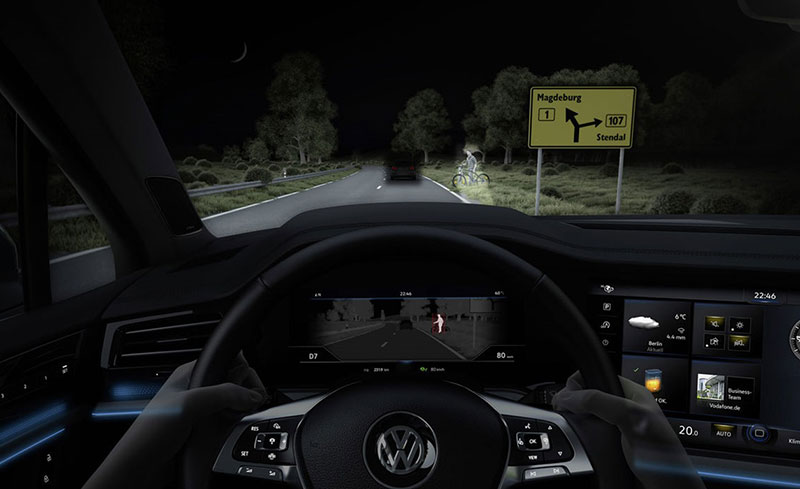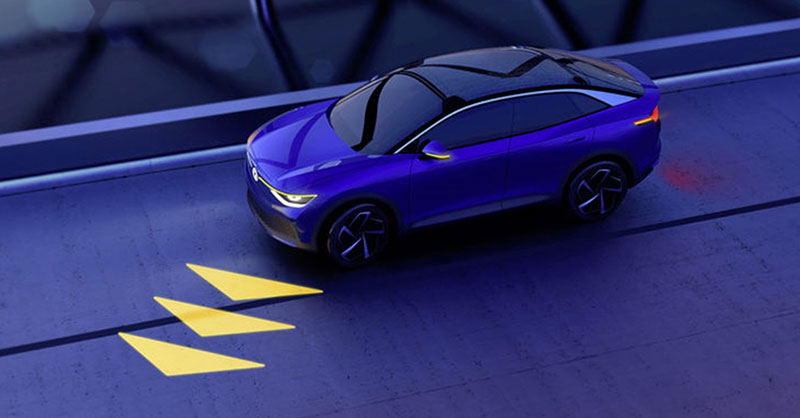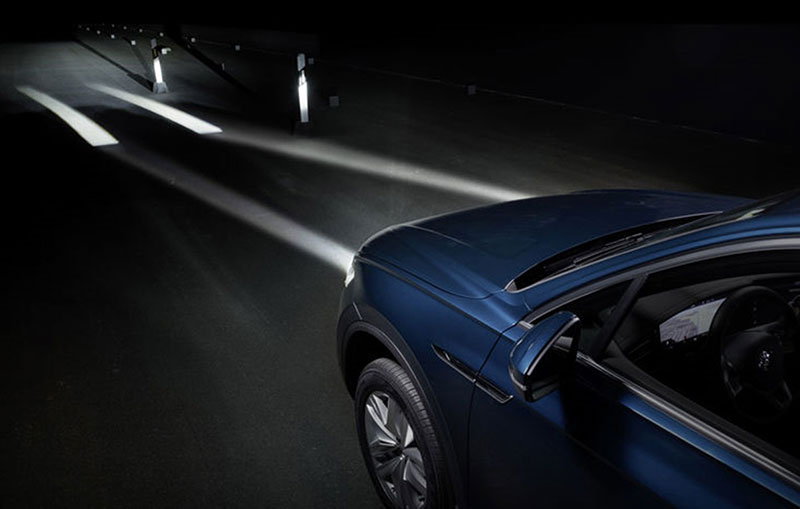Autonomous Cars
Klaus Bischoff, Volkswagen’s designer-in-chief, has very clear ideas about how lighting in the future will impact autonomous driving. Bischoff says, “The lighting of the future will become a means of communication. It will interact with the driver and with other road users – whether in a car, on a motorcycle or bicycle, or as a pedestrian on the road – measurably improving safety (Fig. 3). At the same time, we will integrate the lighting functions into the design of the vehicles more progressively than ever before.”
 |
||
| Figure 3. | People or animals at the edge of the road are detected by infrared technology and briefly illuminated. |
|
What now often works through eye contact, for example at pedestrian crossings, isn’t possible with autonomous driving. If the driver is no longer on board or is otherwise busy in the car, the car must communicate directly with the pedestrian. This can take place by means of light signals at the front of the vehicle which signal to the pedestrian that the car has recognized him and he can walk across the road.
For this, however, internationally defined standards are absolutely imperative. The globally recognized “red-yellow-green” code for traffic lights today remains undefined for future communication in road traffic. Mathias Thamm says many experts are currently working on developing a simple language for light communication that’s accepted and understood worldwide.
Future Lighting
Volkswagen is designing, prototyping, and testing ideas for external lighting. Some of these might make their way onto production vehicles fairly soon. One, for example, projects a pair of red warning lines onto the road when a car is reversing (Fig. 4), letting pedestrians know where the danger zone is and presumably eliminating the problem of backing out of a high-fenced driveway into the path of a cyclist on the footpath.
 |
||
| Figure 4. | A pair of red warning lines projected onto the road when a car is reversing lets pedestrians know the danger zone. |
|
New systems such as this matrix tail-light cluster will also revolutionize tail lights. Matrix tail-light clusters will allow warnings to be incorporated into the tail lights. This will enable, for example, dangerous situations such as the area at the end of a traffic jam to be defused using car-to-car communication.
Another idea projects shapes on the road showing where a human driver's blind spot is, making it clear where there’s a safe spot. Another extends the indicators with bright orange arrows on the road that extend into the space you're planning to move toward (Fig. 5).
 |
||
| Figure 5. | Arrows projected on the roadway indicate change of direction. | |
"Optical Lane Assist" paints the road ahead with lines showing the width and trajectory of your car, bending as the steering wheel turns (Fig. 6). This shows exactly how much room you're leaving for roadworks, for example, or to give you an idea of which gaps you can fit through. They would also give oncoming cars on narrow country roads a clear idea of how much road space they've got to use. It’s achieved using a HD micro-pixel headlight design that has up to 30,000 different light points to work with at varying intensities.
 |
||
| Figure 6. | In the future, headlamps will mark the lane in narrow passages in advance. | |
In a complex, noise-intensive traffic environment, light is the optimal means of communication. The headlights take over the task of maintaining eye contact with other road users. Where does the car want to go? Has it noticed the pedestrian, and will it remain stopped? This naturally increases safety.
Lighting elements can also clearly indicate whether the car is in autonomous-driving mode, or if it’s starting up and pulling away. Furthermore, owners will be able tell from a light signal whether the vehicle is still charging, or is ready for travel again.
A major challenge of the future is the energy efficiency of light. “It goes without saying that we are extremely keen to increase the reach of electric driving achieved through modern battery technology by using energy-saving lighting technology,” says Michael Müller, who is responsible for coordinating innovation topics in lighting development at Volkswagen.